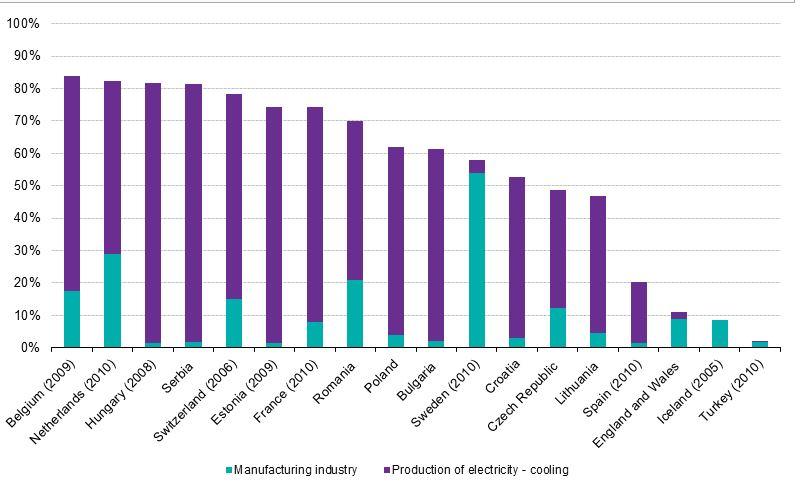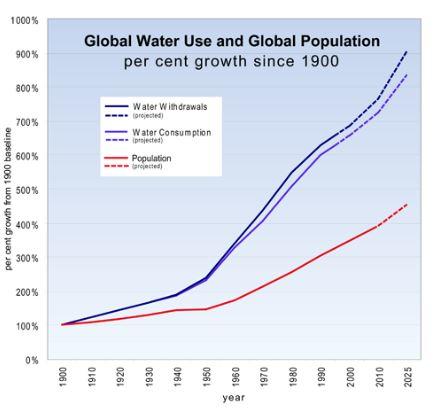Critical Thinking: What do we need to do to make sure our (global) society provides enough clean water to sustain life (now and in the future)?
Taking into account the fact that most of the Earth’s surface is covered by water, it is difficult to imagine that it may not be enough. However, the seas and oceans contain only saltwater that is unsuitable for human use. To maintain life, humans and animals need clean water. The largest reserves of freshwater are concentrated in lakes and rivers, mountain glaciers, polar ice, and groundwater (Smith, Shaffer, and Young par. 1).
At the same time, as the poles of the Earth are not suitable for the cultivation of agricultural plants, humans have a relatively small portion of drinkable water. Besides, several factors are polluting the water such as deforestation, industry, and its inappropriate use. In this connection, the paper aims at the identification of measures to provide enough clean water nowadays and in the future using economical terms.
First, it is necessary to consider the impact of industry on the clean water. Water pollution is associated with the period of liberal economic reforms and the weakened control over the degree of pollution of natural waters as plenty of dangerous chemicals, industrial production, hydraulic engineering, and transport systems were created in the 50-70s of the last century, and most of them need renovation. Moreover, one might note that the current industry pollutes the drinkable water through various emissions from chemicals to agriculture (Figure 2).

More to the point, for example, in China and several other Asian countries, there is an increasing development of the internal competition for water resources between agriculture and industry. At the same time, farmers prefer not to reduce the water consumption but to increase the value-added in products. This conflict between private initiatives and priorities of the region should be an object of public policy regulation: the only effective stimulus is ambitious benefits to farmers.
Speaking of irrigation in agriculture, it is of great importance to point out the fact that it requires huge expenditures of water. In this connection, agricultural areas of the water supply system should have a large capacity, especially in arid conditions. From the reservoir, water is sent to the faced canals and then by branch distribution to irrigation channels to the farm. The majority of the reservoirs should be located above the irrigated land so that water can flow under gravity while farmers, who store up water, pump it from wells directly into ditches or storage ponds.
The price of the drinkable water steadily grows. In this regard, the externalities of water preservation become obvious. Although the gap between water supply and demand is constantly growing, one might note the increase of externality supply with the raise of the demand. The implementation of water-saving technologies in industry and agriculture is necessary. Much attention should be given to the reconstruction of the outdated buildings by new wastewater purification plants, especially in large towns and cities.
Since the flow of large rivers depends on the ecological status of small tributaries, it is necessary to carry out the certification of small rivers, especially in the most populated regions. For a better understanding of the deep hydrodynamic and hydro-geochemical processes, it is necessary to create a permanent geofiltration model for individual regions.
Besides, it seems important to establish a system of tradable pollution permits. For example, Cap and Trade government system monitors the overall water pollution rates and divides it to all the companies that utilize dangerous contaminants. However, for those businesses that cannot adapt, the government can apply the system of taxation. Thus, the government would reduce pollution from factories. Speaking more precisely of the taxes, water taxpayers can be organizations and individuals engaged in special water use by their economical needs. The tax base might be determined separately for each tax entity as the tax rate is a set depending on the object of taxation and the tax base.
The second problem is the waste of clean water that is expressed in its inappropriate use. For example, domestic garbage including plastic is still discharged into oceans without any purifying system. In many countries, people still use polluted water to wash and cook. As it is shown in Figure 2, people use more and more water every year.

To preserve the water, it seems adequate to pay attention to taxes and implement new standards for water consumption. Thus, economy, efficiency, and environmental focus would help humanity to keep the clean water necessary for life sustainability. Additionally, there are two common ways of water conservation consisting of conservation of existing reserves of usable water and the increase of its reserves by constructing new collectors.
The accumulation of water in the reservoirs prevents its flow into the ocean, where it can be removed again only in the process of the water cycle in nature, in other words, by desalination. In their turn, reservoirs also promote the consumption of water at the right time as water may be stored in underground cavities. In this case, there would be no moisture loss due to the evaporation. The preservation of existing water supplies contributes to the channels that do not allow water infiltrating into the soil and ensuring its efficient transportation; using more efficient methods of irrigation; reducing the volume of water flowing from the fields or the filter below the root zone of cultivated plants; and careful use of water for household needs.
Ultimately, the modern systems of filtration, water purification, and distribution should be developed as they are not only convenient but they also help to prevent the spread of waterborne diseases such as typhoid and dysentery.
Among the other important problems, there is a shortage of water-saving financing. Consequently, the first step should provide stable financial support to the water sector in the world. To do this, it is essential to generate economic mechanisms of water use at both national and intergovernmental levels. The financing of the water sector at the expense of different sources should cover its costs taking into account the prospects for further development.
At the same time, the targeted social protection of the population should be provided. The broad involvement of the appropriate businesses through the elaborated incentives to solve the problems of the water sector is of great importance. The progress in the financing of water preservation would promote government support for manufacturers of relevant resources and the owners of the water supply and sanitation systems through grants, subsidies, preferential loans, customs, and tax privileges. It is also crucial to pay attention to the training of the personnel concerning the modern innovative technologies to increase the attractiveness of water and environmental projects for international integration.
Also, there is the need to strengthen the external financial assistance to poor regions of the world, for which it is advisable to assess the financial needs of each country with the layouts of funding sources and destinations such as sanitation, irrigation, hydropower, recreation, and others. The development of innovative financial mechanisms would take a lot of effort. For example, it is possible to develop both domestic and international programs that would invest in human development and help those in need in clean water ensuring confidence in the development of economic instruments in the field of clean water resources.
In conclusion, it should be stressed that based on the above, the scale and pace of pollution of the hydrosphere are much higher than in other natural environments. The increasing sense of the situation with water in the world due to the discharge of polluted effluents into water and wastewater causes enormous economic damage. The growing degradation of natural waters requires resolute actions and specific targets for their rescue programs.
Much economical effort should be made to preserve freshwater sources and to search for possible economical ways to address the lack of clean water in the global context both today and in the future. This paper revealed that such measures as the increased financing, improving the work of the organizations and agencies that control the quality of natural waters, and the modern equipment are beneficial to preserve the drinkable water worldwide for the future.
Works Cited
Smith, Hedrick, Mark Shaffer, and Rick Young. “Frontline.” PBS. 2009. Web.